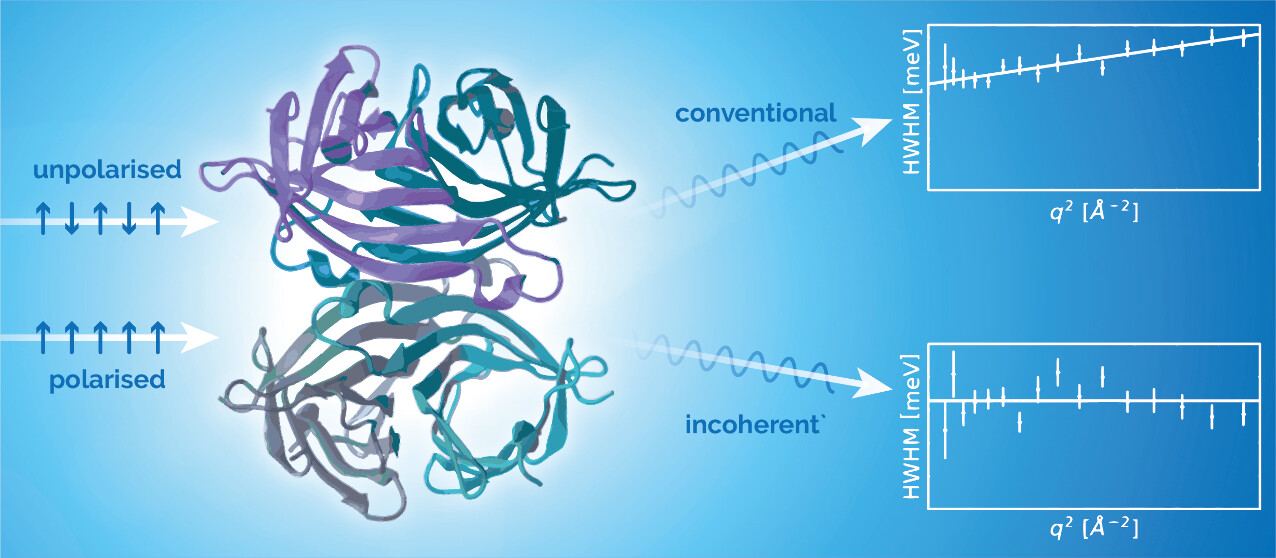Quasi-elastic neutron scattering (QENS) is widely used for studying proteins and other biological systems, as it gives information about the dynamics of these biological molecules. To understand what signals are caused by the movements of the molecules of interest, and what can be attributed to the solution the molecules are in, the signals must be separated.
As part of this process, its often assumed that the buffer solution, which is usually deuterated, contributes the entirety of the coherent scattering to the sample signal. This leaves the molecule of interest responsible for the incoherent contribution, and therefore the only contributor to the signal after the buffer signal is subtracted.
However, this assumption has never been checked. With recent improvements in instrumentation leading to the ability to carry out polarised QENS measurements, the two contributions can now be separated. A group of ISIS scientists, led by Mona Sarter, have used the LET beamline at ISIS to do just that and test whether the coherent contribution of the protein is negligible.
Using neutron polarisation analysis (NPA), they studied the model protein streptavidin in a deuterated buffer. NPA allowed them to separate the coherent and nuclear-spin-incoherent scattering during analysis, as well as record the sum of both, in order to provide a total scattering signal that was identical to what would have been obtained in a typical unpolarised QENS measurement.

Their results showed, surprisingly, that the assumption was incorrect, and that the coherent contribution could not be fully attributed to the buffer. This is likely due to a hydration layer surrounding the protein contributing to the coherent scattering.
“My first thought was that I needed to double check the results!" Mona explains; “Despite being unaware that the assumption was incorrect, I am lucky in that my previous results are unaffected."
To prevent causing errors in future experiments from including this contribution, the ideal scenario would be to use NPA alongside QENS measurements. However, due to the limited access to NPA spectrometers, the group also developed an experimental solution for users who cannot access these instruments. Their full recommendations on experimental setup, including recommended q-ranges, and analysis can be found in their paper, published in JACS.
“I will affect what I will do in the future, as I will limit the q-ranges I use for non-polarised QENS," Mona adds. In the future, the proposed SHERPA beamline would enable the use of NPA alongside QENS.
The full paper can be found online at DOI: 10.5286/ISIS.E.RB2220749.
